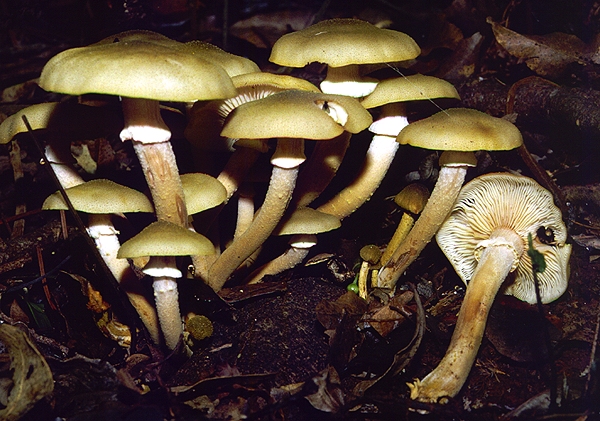
Armillaria luteobubalina Watling & Kile

Common name: None. A rather similar and closely related species in Europe is known as the Honey Fungus.
Description: The caps are up to 10 cm in diameter and are at first convex then plane or upturned at the edges; often the margins can be somewhat wavy. The cap colour is variable but is mostly yellow-brown; however cream-coloured or greenish tints are common. The cap margins are usually a little in-rolled and the flesh is white and thin. The gills are white, become brownish with age and are adnate to decurrent. The stems may be up to 20 cm long and 1 cm thick; they are brownish and dry with a fixed, white, membranous ring near the gills.
The spores measure 7.59 × 56.5 µm and are ellipsoidal, smooth and colourless but white in mass.
Substratum: Always on wood; if apparently on soil, then the wood is buried beneath. The fungus grows in dense clusters and is quite spectacular when it fruits prolifically.
Distribution: Known previously from Western Australia, Tasmania, Victoria and New South Wales where it is common in eucalypt forests. It has recently been found in mountain rainforest in Queensland.
Notes: This species is a dangerous parasite of eucalypts. If tasted, it has a burning, bitter and very unpleasant flavour which is difficult to remove from the mouth for quite a few minutes. Apart from the trunks of living trees, it appears also in tufts on the ground at the bases of tree undergoing attack and sometimes on soil along the line of infected roots. When the fungus is producing spores, the wood nearby or caps underneath the gills of overlapping caps become covered in a white deposit of spores.
